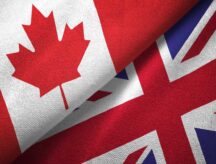Federal vs provincial skilled worker programs: Comparing immigration fees and processing times
The cost to apply for Canadian immigration may be a factor in deciding which economic pathway to take.
In Canada, you always end up applying to Immigration, Refugees and Citizenship Canada (IRCC) for permanent residence, as constitutionally the federal government has the final say on immigration. However, you can also apply for a province to vouch for your permanent residency application. If you successfully apply to a provincial pathway, you will get a nomination certificate, or a Quebec Selection Certificate from Quebec, to support your permanent residence application to IRCC.
While this option opens you up to an abundance of immigration options, it can be more costly and take more time. On the other hand, provincial programs may open the doors to even more immigration candidates. They are fine-tuned to open pathways to permanent residence for workers whose skills match with regional labour market needs.
In this article, we will compare the costs of different economic-class immigration programs. At the same time, weigh the pros and cons of immigration through Express Entry vs provincial immigration.
Discover if You Are Eligible for Canadian Immigration
Costs for skilled workers to apply to IRCC-run programs
When you apply for immigration to IRCC, you usually have to pay an application fee for yourself, and any dependents coming with you to Canada such as your spouse or common-law partner, and your children. You also have to pay a right of permanent residence fee for yourself and your partner. Dependent children are exempt from this fee.
Fees for Canadian immigration are going up this year for applications of most economic, family, and humanitarian classes. In 2020, IRCC increased permanent residence fees to account for inflation for the first time since 2002. At that time, IRCC announced it would increase fees every two years to adjust for inflation, meaning this year fees are now due to go up. The next increase is expected to happen in 2024.
Starting April 30, the fees for the following immigration programs will go up about $40 more than the current cost of $1,325. Principal applicants and accompanying spouses will each have to pay $1,365 (all amounts are in CAD) plus any biometrics fees to apply:
- Express Entry-managed programs
- Provincial Nominee Program (PNP)
- Quebec Skilled Worker
- Atlantic Immigration Program
- Other economic pilots (Rural and Northern Immigration Pilot and Agri-food Immigration Pilot)
Biometrics fees run about $85 per person, or $175 for a family of two or more. To give an example of some possible full costs, one principal applicant applying for an Express Entry-managed program could pay $1,450 including biometrics fees. A family of two could pay $2,905 for the same program. If they had one child, fees could run to about $3,135. Each dependent child will cost $230.
The application fees are different depending on the immigration program, but the right of permanent residence fee is always the same. Here is the list of fees for federal immigration programs in 2022.
| Program | Applicants | Current fee | New fee April 30, 2022 |
|---|---|---|---|
| Right of Permanent Residence Fee | Principal applicant and accompanying spouse or common-law partner | $500 | $515 |
| Express Entry, Provincial Nominee Program and Quebec Skilled Workers, Atlantic Immigration Class and most Economic Pilots (Rural, Agri-Food) | Principal applicant | $825 | $850 |
| Accompanying spouse or common-law partner | $825 | $850 | |
| Accompanying dependent child | $225 | $230 | |
| Live-in Caregiver Program and Caregivers Pilots (Home Child Provider Pilot and Home Support Worker Pilot) | Principal applicant | $550 | $570 |
| Accompanying spouse or common-law partner | $550 | $570 | |
| Accompanying dependent child | $150 | $155 | |
| Business (Federal and Quebec) | Principal applicant | $1,575 | $1,625 |
| Accompanying spouse or common-law partner | $825 | $850 | |
| Accompanying dependent child | $225 | $230 | |
| Family Reunification (Spouses, Partners and Children; Parents and Grandparents; and other relatives) | Sponsorship fee | $75 | $75 |
| Sponsored principal applicant | $475 | $490 | |
| Sponsored dependent child | $75 | $75 | |
| Accompanying spouse or common-law partner | $550 | $570 | |
| Accompanying dependent child | $150 | $155 | |
| Protected Persons | Principal applicant | $550 | $570 |
| Accompanying spouse or common-law partner | $550 | $570 | |
| Accompanying dependent child | $150 | $155 | |
| Humanitarian and Compassionate / Public Policy | Principal applicant | $550 | $570 |
| Accompanying spouse or common-law partner | $550 | $570 | |
| Accompanying dependent child | $150 | $155 | |
| Permit Holders | Principal applicant | $325 | $335 |
Costs to apply for PNPs and Quebec immigration
On top of the fees required to apply for immigration to the federal government, PNP and Quebec candidates oftentimes have to pay application fees to their desired province. For example, a single person wanting to immigrate to Ontario would pay $2,925 through a PNP, but about $1,450 through Express Entry.
There are now four PNPs that do not charge fees to apply for provincial nominations: Newfoundland and Labrador, Nova Scotia, Northwest Territories, and the Yukon. Newfoundland and Labrador recently removed its fees in an effort to encourage newcomers to apply for immigration to the province.
Skilled workers applying to other provinces can expect to pay between $250 and $1,500.
| Provincial Nominee Program (PNP) + Quebec | Application fee for principal applicant |
|---|---|
| Alberta Advantage Immigration Program (AAIP) | $500 |
| British Columbia Provincial Nominee Program (BC PNP) | $1,150 |
| Manitoba Provincial Nominee Program (MPNP) | $500 |
| New Brunswick Provincial Nominee Program (NB PNP) | $250 |
| Newfoundland and Labrador Nominee Program (NLPNP) | $0 |
| Nova Scotia Nominee Program (NSNP) | $0 |
| Northwest Territories Nominee Program (NTNP) | $0 |
| Ontario Immigrant Nominee Program (OINP) | $1,500 |
| Prince Edward Island Provincial Nominee Program (PEI PNP) | $300 |
| Quebec | $844 |
| Saskatchewan Immigrant Nominee Program (SINP) | $350 |
| Yukon Nominee Program (YNP) | $0 |
Base vs Enhanced PNPs
The difference between base and enhanced PNPs depends on whether candidates have an Express Entry profile. Base PNPs are run by the provincial government. Enhanced PNPs are only open to Express Entry candidates.
Those who are eligible for an enhanced PNP qualify for an Express Entry managed program such as the Federal Skilled Worker Program (FSWP), Canadian Experience Class (CEC), or Federal Skilled Trades Program (FSTP).
The benefit of being in the Express Entry pool is the possibility of applying directly to IRCC for immigration. Since IRCC has the final say on who gets permanent residence, applying for Express Entry is more straightforward than applying for a PNP. Whereas when you apply for a PNP, you first apply for a nomination from the province then apply for permanent residence.
Express Entry is a points-based system used by the federal government to invite immigration candidates to apply for permanent residence. The top-scoring candidates get issued Invitations to Apply (ITAs) in bi-weekly rounds of invitation. Since the pandemic though, IRCC has oftentimes been inviting candidates who are eligible for the CEC or PNP class. IRCC has only invited PNP candidates since September 2021, and has not held a draw for FSWP candidates since December 2020.
In the past, a high-scoring Express Entry candidate may have declined an invitation to apply for a provincial nomination, and just waited to get an Express Entry ITA so that they only needed to pay one application fee. However, since the pause on FSWP and CEC draws has impacted Canadian immigration plans all over the world, the option to apply for an enhanced PNP has become more attractive.
Express Entry candidates who receive a provincial nomination are awarded an additional 600 points toward their Comprehensive Ranking System (CRS) score. This award effectively guarantees that they will receive an ITA and be able to apply for permanent residence.
Those who are not eligible for an Express Entry-managed program may be able to apply for a province's base PNP. These immigration programs are run by the provinces themselves. They usually take more time to process.
Comparing processing times
According to the processing times estimates on April 19, it is taking IRCC 28 months to process base PNPs and 22 months to process Express Entry PNPs. The estimated processing time for Quebec skilled workers is now at 31 months.
The processing standard to apply for Express Entry directly is six months, although the pandemic has dramatically slowed down these processing times. It is currently taking IRCC 27 months to process FSWP applications and eight months to process CEC applications. FSTP candidates are looking at a wait time of 37 months.
Conclusion
Should you apply directly to a federal program or provincial one? Ultimately your decision should be based on which streams you are eligible for and the ones you feel give you the best chance of getting permanent residency. If you are eligible for Express Entry, it is beneficial to upload a profile since, in addition to being considered for an ITA by IRCC, you will also be considered by provinces looking to invite candidates to apply to their PNP.
This year, Canada aims to welcome 83,500 PNP candidates, as per the 2022-2024 Immigration Levels Plan. This figure is expected to increase to 93,000 by 2024. IRCC anticipates that 55,900 immigrants will come through Express Entry this year, but by 2024 the number of Express Entry immigrants is set to increase to 111,500.
Discover if You Are Eligible for Canadian Immigration
© CIC News All Rights Reserved. Visit CanadaVisa.com to discover your Canadian immigration options.
- Do you need Canadian immigration assistance? Contact the Contact Cohen Immigration Law firm by completing our form
- Send us your feedback or your non-legal assistance questions by emailing us at media@canadavisa.com





